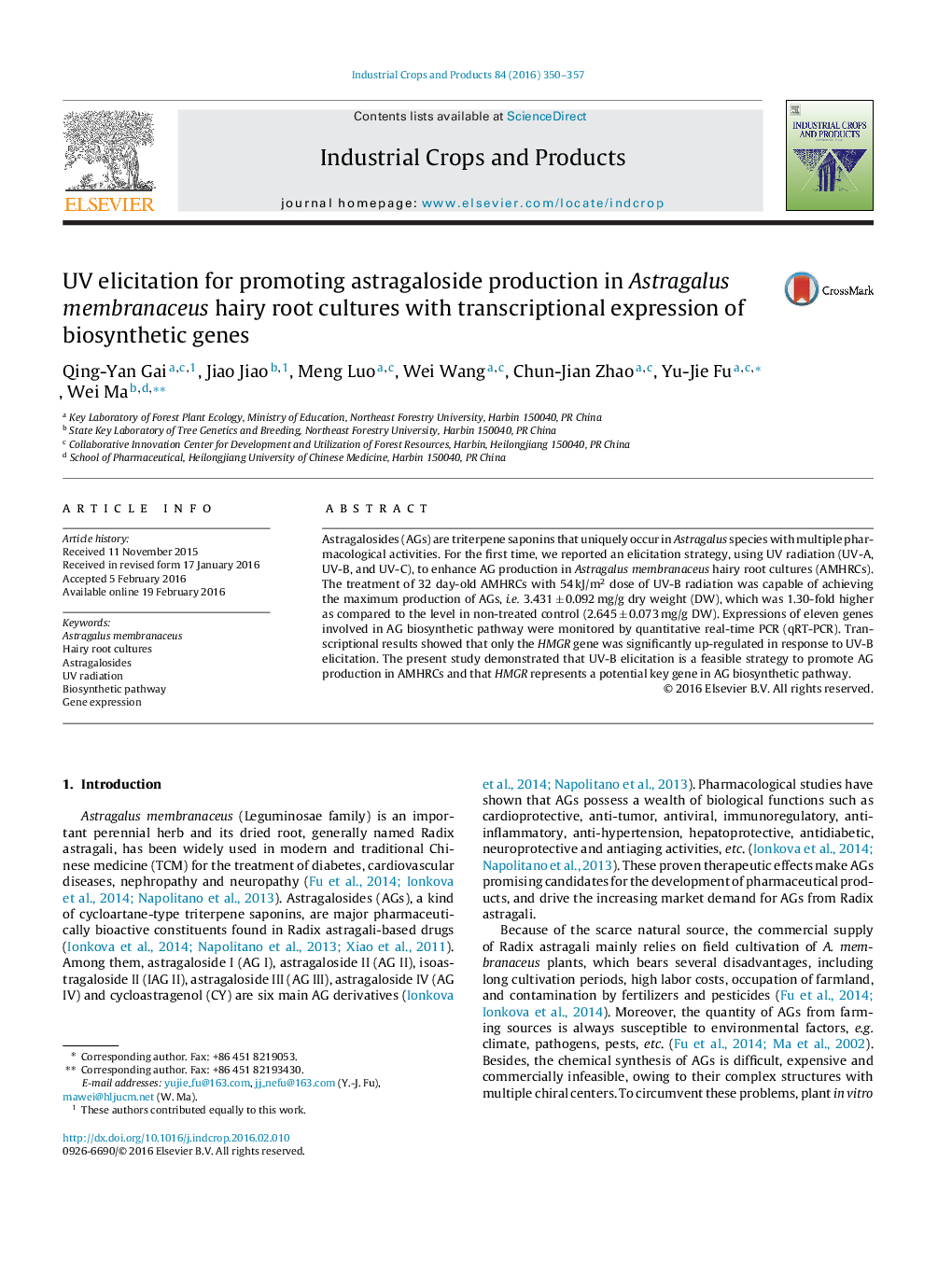| Article ID | Journal | Published Year | Pages | File Type |
|---|---|---|---|---|
| 4512392 | Industrial Crops and Products | 2016 | 8 Pages |
•UV elicitation was firstly applied for promoting astragaloside production in AMHRCs.•Astragaloside biosynthesis was enhanced in UV-B elicited AMHRCs.•Transcriptions of eleven astragaloside biosynthetic genes were monitored by qRT-PCR.•A limiting step of astragaloside biosynthesis was probably controlled by HMGR gene.
Astragalosides (AGs) are triterpene saponins that uniquely occur in Astragalus species with multiple pharmacological activities. For the first time, we reported an elicitation strategy, using UV radiation (UV-A, UV-B, and UV-C), to enhance AG production in Astragalus membranaceus hairy root cultures (AMHRCs). The treatment of 32 day-old AMHRCs with 54 kJ/m2 dose of UV-B radiation was capable of achieving the maximum production of AGs, i.e. 3.431 ± 0.092 mg/g dry weight (DW), which was 1.30-fold higher as compared to the level in non-treated control (2.645 ± 0.073 mg/g DW). Expressions of eleven genes involved in AG biosynthetic pathway were monitored by quantitative real-time PCR (qRT-PCR). Transcriptional results showed that only the HMGR gene was significantly up-regulated in response to UV-B elicitation. The present study demonstrated that UV-B elicitation is a feasible strategy to promote AG production in AMHRCs and that HMGR represents a potential key gene in AG biosynthetic pathway.
Graphical abstractFigure optionsDownload full-size imageDownload as PowerPoint slide
